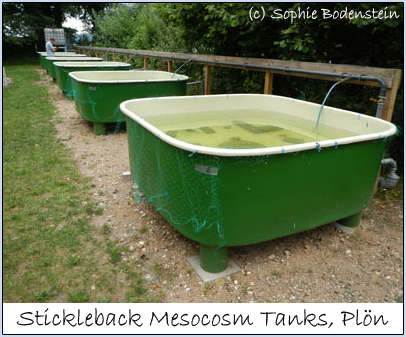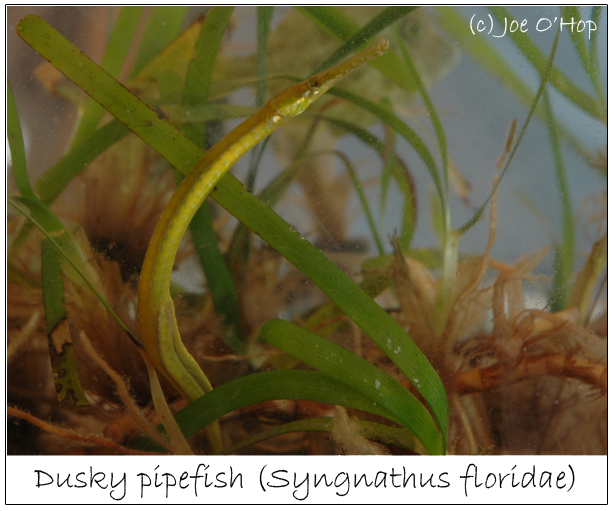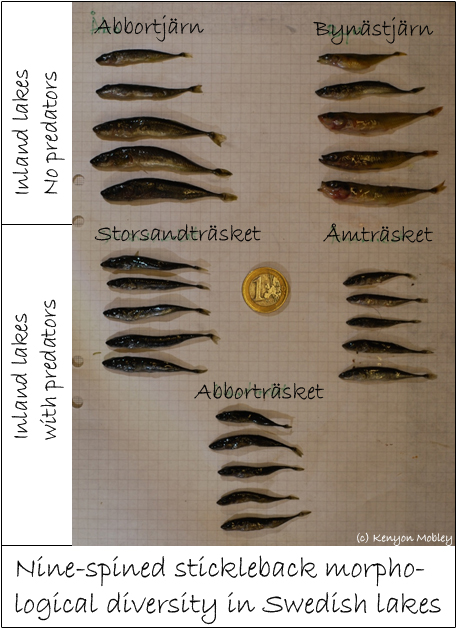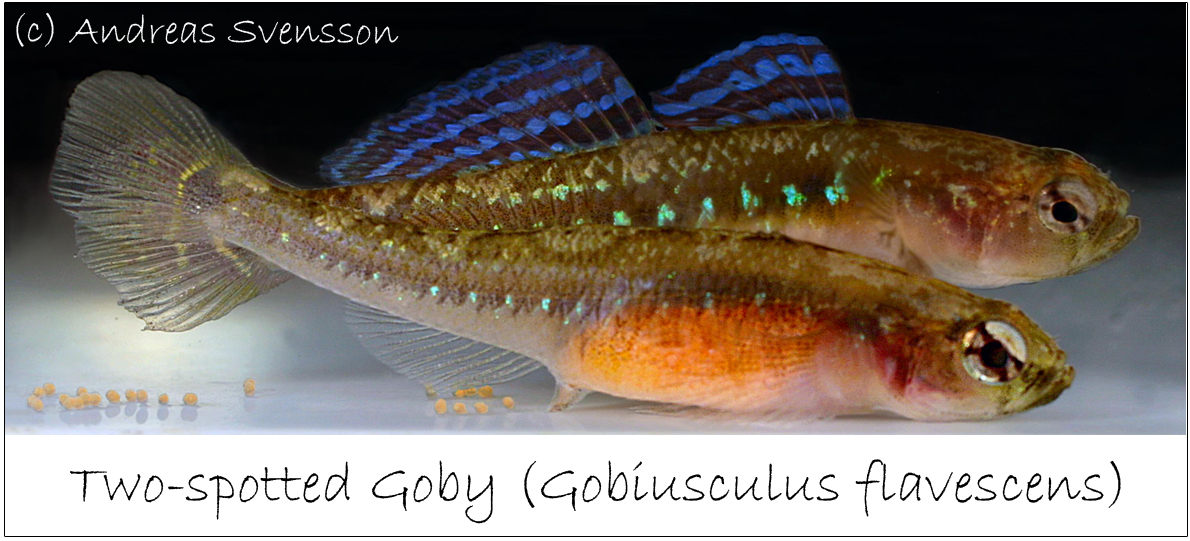Research Interests
Sex, Parasites and Behavior
Mating Systems and Sexual Selection
Ecological Speciation
Parental Care and Alternative Reproductive Tactics
Mating Systems and Sexual Selection
Ecological Speciation
Parental Care and Alternative Reproductive Tactics
 My research investigates how parasites influence reproductive behavior and the evolution of mating decisions. I am currently running a two-year project that observes three-spined sticklebacks in outdoor mesocosm tanks. The goal of this research is to see how parasites affect mate choice by altering the behavior and reproduction of individuals that are exposed to parasites. Here, I focus in the major histocompatibility complex (MHC) as a bridge between mate choice and parasite defense.
I am also currently investigating MHC-mediated mate choice in nine-spined stickleback to compare to the relatively well-studied three-spined stickleback system.
My research investigates how parasites influence reproductive behavior and the evolution of mating decisions. I am currently running a two-year project that observes three-spined sticklebacks in outdoor mesocosm tanks. The goal of this research is to see how parasites affect mate choice by altering the behavior and reproduction of individuals that are exposed to parasites. Here, I focus in the major histocompatibility complex (MHC) as a bridge between mate choice and parasite defense.
I am also currently investigating MHC-mediated mate choice in nine-spined stickleback to compare to the relatively well-studied three-spined stickleback system.  Explaining the baffling diversity of mating behaviors and gaudy ornaments in species has fascinated researchers since the time of Darwin. My contributions to this field include looking how sexual selection varies in different populations or in the same population over time. I use a combination of theory, molecular techniques, experiments and field studies to identify specific ecological factors that may explain such variation in sexual selection. I am also interested in understanding how post-copulatory sexual selection, or the potential for either males or females to manipulate the outcome of mating competition after sex, affect sexual selection via gamete competition or cryptic gamete choice.
Explaining the baffling diversity of mating behaviors and gaudy ornaments in species has fascinated researchers since the time of Darwin. My contributions to this field include looking how sexual selection varies in different populations or in the same population over time. I use a combination of theory, molecular techniques, experiments and field studies to identify specific ecological factors that may explain such variation in sexual selection. I am also interested in understanding how post-copulatory sexual selection, or the potential for either males or females to manipulate the outcome of mating competition after sex, affect sexual selection via gamete competition or cryptic gamete choice.
 How do ecological conditions contribute to the morphological and genetic diversity of contemporary populations? What is the role of phenotypic plasticity in invasion and speciation? Can we uncover evidence for rapid speciation in populations that have been subjected to recent introductions of species by man? These are the types of questions I’m interested in answering concerning ecological speciation. My research has concentrated on the morphological and genetic diversity of nine-spined sticklebacks in ponds, lakes and rivers around the Baltic Sea that have been isolated since the last glacial retreat about 10,000 years ago. I am also involved in research where known human introductions of whitefish in Swedish lakes differentiate into distinct dwarf and giant ecomorphs in a very short time - anywhere between 20 years to 200 years ago.
How do ecological conditions contribute to the morphological and genetic diversity of contemporary populations? What is the role of phenotypic plasticity in invasion and speciation? Can we uncover evidence for rapid speciation in populations that have been subjected to recent introductions of species by man? These are the types of questions I’m interested in answering concerning ecological speciation. My research has concentrated on the morphological and genetic diversity of nine-spined sticklebacks in ponds, lakes and rivers around the Baltic Sea that have been isolated since the last glacial retreat about 10,000 years ago. I am also involved in research where known human introductions of whitefish in Swedish lakes differentiate into distinct dwarf and giant ecomorphs in a very short time - anywhere between 20 years to 200 years ago.  I am interested in how and why various forms of parental care and mating tactics evolve. Fishes are a fantastic group to investigate the costs of paternal care and the evolution of alternative mating strategies such as sneaking behaviors for several reasons. Fishes display the widest range of reproductive strategies than any other vertebrate lineage and as a consequence, many unusual and unique forms of mating strategies and parental care have evolved. Furthermore, male parental care is more common in fishes than any other taxonomic group. Gobies and pipefishes are exceptional models to work with on these topics because high costs of paternal care can lead to stronger sexual selection to occur in females - a situation that is fairly rare in other branches of the animal kingdom.
I am interested in how and why various forms of parental care and mating tactics evolve. Fishes are a fantastic group to investigate the costs of paternal care and the evolution of alternative mating strategies such as sneaking behaviors for several reasons. Fishes display the widest range of reproductive strategies than any other vertebrate lineage and as a consequence, many unusual and unique forms of mating strategies and parental care have evolved. Furthermore, male parental care is more common in fishes than any other taxonomic group. Gobies and pipefishes are exceptional models to work with on these topics because high costs of paternal care can lead to stronger sexual selection to occur in females - a situation that is fairly rare in other branches of the animal kingdom.